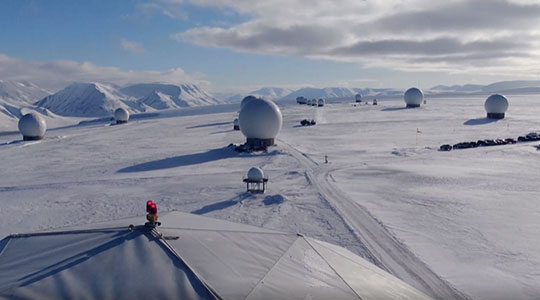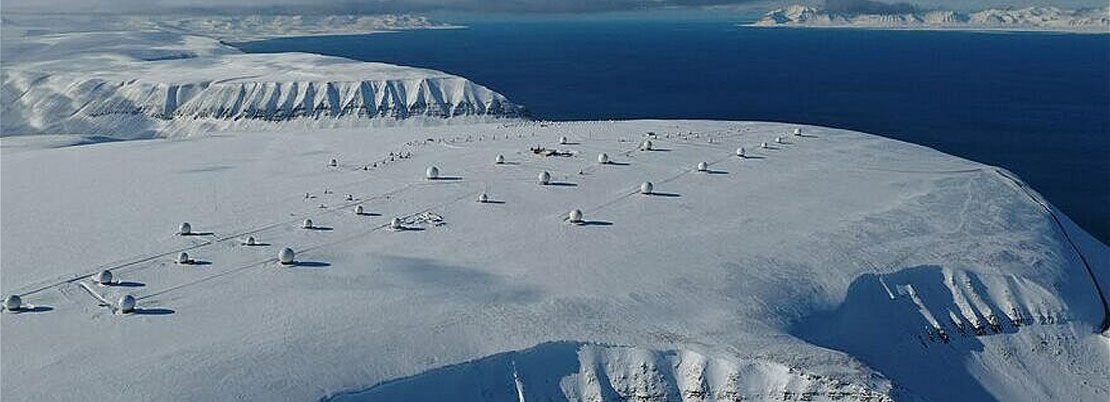 With more than 200 antennas worldwide KSAT is well-positioned to provide support for any missions in all orbits, from LEO to the Moon.
With more than 200 antennas worldwide KSAT is well-positioned to provide support for any missions in all orbits, from LEO to the Moon.
In the fifty+ years since the first human landing, the moon has remained as silent as it is distant. That may be about to change as more than 100 lunar missions are planned for this decade with the goal of establishing data storage facilities, exploration bases and even colonies.
The area around the Earth extending out to just beyond the Moon’s orbit is referred to as cislunar, and it will need communications infrastructure to support these and other missions. To meet the demand for lunar comms, Kongsberg Satellite Services (KSAT) is investing in a purpose-built lunar ground network. The Lunar Team at KSAT has been preparing the service and is currently engaging with antenna manufacturers and selecting optimal locations for the antennas.
According to Martin Krynitz, Head of Business Development at Kongsberg Satellite Services (KSAT) and leading the company’s lunar initiative, “the basic infrastructure needed for transmission from earth to the moon is just not there yet and therein lies KSAT’s opportunity to be the first to fill the void.”
The magnitude of effort required to establish a lunar infrastructure is significant. In addition to building the expensive and complex 20-meter antennas and adapting them for lunar communications, suitable sites with the right climate for those antennas need to be identified and secured. Krynitz’s concern is whether lunar mission planners are aware of the lack of communication infrastructure and optimistically assume that the necessary ground infrastructure will be ready for them.
Site Locales Are Critical to Success
In contrast to existing KSAT lite 3.7-meter antennas that communicate with small satellites in low Earth orbit, the KSAT lunar network is likely to rely on 20-meter antennas. This year, KSAT is designing its lunar network and identifying three sites for the large antennas to provide continuous coverage for lunar missions and lunar data relay constellations. Finding the best sites is not an easy task as the antenna network needs to be spread out on roughly 120 degrees longitude spacing to ensure continuous visibility to the moon as the Earth rotates.
In addition to size, antennas need to be full motion to assure constant view of the Moon. The number of potential sites is limited in that they have very specific requirements for lunar communications. First, they must be less than 40° latitude from the equator. There are sites north of 40° (e.g.: Goonhilly ground station in England), but it is sub-optimal for lunar communications and results in visibility gaps. Given the capital investment required for the lunar network KSAT is building, Krynitz wants to make it as efficient as possible by avoiding sites north of 40° to guarantee constant visibility of the Moon.
 KSAT's global ground station network includes 100 antennas in Svalbard, Norway.
KSAT's global ground station network includes 100 antennas in Svalbard, Norway.
Effects of Wind and Rain
John Heskett, KSAT’s Chief Technology Officer, adds that the sites must have direct line of site to the moon or a lunar relay satellite and have minimal precipitation and wind. The large size of the apertures makes them susceptible to the force of wind. Given the size of the apertures, the beamwidths are extremely narrow (the larger the aperture, the smaller the beam width). Thus, pointing accuracy is critical and minimizing the wind helps. With respect to precipitation, the signals coming from the Moon will be very low power. Limiting signal fades due to precipitation is much more important than for a LEO orbiting satellite, especially as the antennas will also support Ka-band.
KSAT’s final locations will be based heavily on the location of their asset in the Americas (e.g., West Coast America). When that site is finalized, other sites in Europe and Australia can be more easily defined, hopefully by the end of 2022. Deployment is targeted for late 2024.
In addition to site challenges, Heskett pointed out some of the antenna technical challenges that must be overcome. These include increased automation for the big antennas and updating Application Programming Interfaces (APIs) as lunar pass times can last hours whereas LEO passes can last 8-12 minutes.
Polar Ground Stations and Cislunar Space
Krynitz views KSAT’s existing global ground stations that provide unique Polar coverage as an important part of the company’s heritage and expertise and will play a role in the company’s cislunar ground stations. The network has been developed over time and in close cooperation with the industry to meet customers growing and changing needs. “The carefully selected locations ensure we can meet all satellite operators’ needs for Low inclined and Mid inclined orbits,” said Krynitz.
Initially, the polar ground stations will not interface with the new lunar antennas, they will continue to support LEO satellites as they do today, except for the launch and early operations phase (LEOP) and orbit raising phase.
“In our ‘OneKSAT’ philosophy,” Krynitz explained, “our full network can be used by a customer via a single scheduling interface.”
For example, for lunar launch and LEO orbits, KSAT would use its LEO network (including polar sites if useful), then, during the Lunar Transition Phase to lunar orbit, they would schedule larger tracking satellite ground station apertures (7 - 13m class). Once they go lunar or cislunar, they would schedule large lunar network dishes.
Establishing a viable lunar infrastructure is challenging, but KSAT leaders are confident and see it as a natural extension of our current global ground network infrastructure. And they are equally confident in the future growth and demand for lunar networks.
